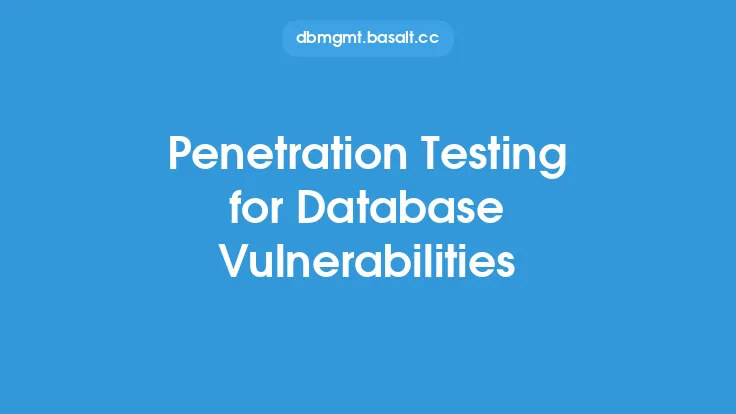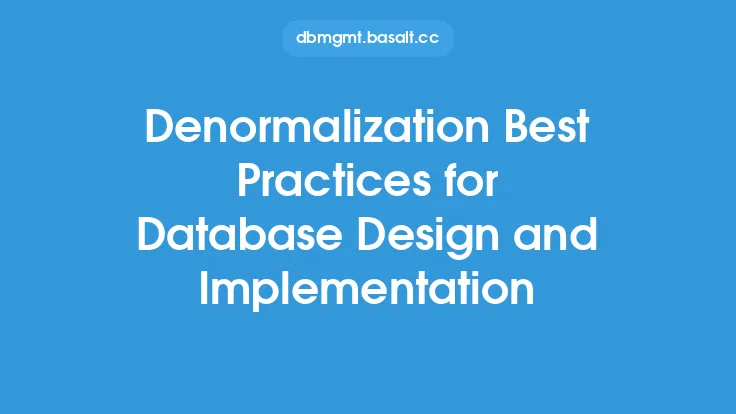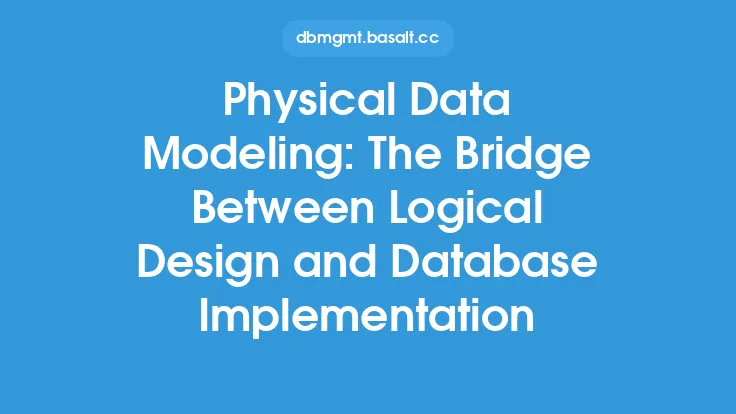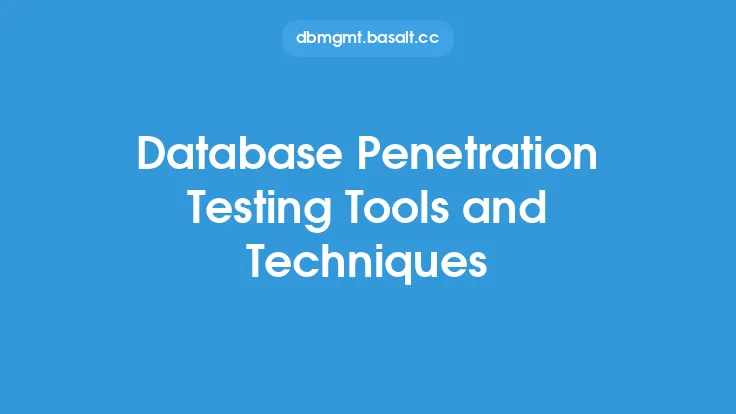When designing and implementing a database, security is a critical aspect that must be considered to protect sensitive data from unauthorized access. One effective way to ensure the security of a database is through penetration testing, which involves simulating cyber attacks on the database to identify vulnerabilities and weaknesses. In this article, we will delve into the world of penetration testing for secure database design and implementation, exploring the various techniques and best practices that can be employed to strengthen database security.
Introduction to Penetration Testing for Database Security
Penetration testing, also known as pen testing or ethical hacking, is a systematic process of testing a database's defenses by simulating real-world attacks. The goal of penetration testing is to identify vulnerabilities and weaknesses in the database's design and implementation, which can be exploited by malicious attackers. By conducting regular penetration tests, database administrators and security professionals can proactively identify and address potential security risks, ensuring the confidentiality, integrity, and availability of sensitive data.
Database Design Considerations for Penetration Testing
When designing a database, several factors must be considered to ensure that it is secure and resistant to penetration testing. One key consideration is the database's architecture, which should be designed with security in mind. This includes implementing robust access controls, encrypting sensitive data, and using secure communication protocols. Additionally, the database should be designed to minimize the attack surface, which can be achieved by limiting the number of user accounts, restricting access to sensitive data, and implementing least privilege principles.
Secure Database Implementation Techniques
Implementing a secure database requires careful consideration of several factors, including data encryption, access controls, and auditing. Data encryption is a critical aspect of database security, as it protects sensitive data from unauthorized access. There are several encryption algorithms and techniques that can be used, including symmetric and asymmetric encryption, hashing, and digital signatures. Access controls are also essential, as they restrict access to sensitive data and prevent unauthorized users from accessing the database. Auditing is another important aspect of database security, as it provides a record of all database activities, allowing security professionals to detect and respond to potential security incidents.
Penetration Testing Techniques for Database Security
There are several penetration testing techniques that can be employed to test a database's security, including network scanning, vulnerability scanning, and password cracking. Network scanning involves using tools to identify open ports and services on the database server, which can be used to launch attacks. Vulnerability scanning involves using tools to identify known vulnerabilities in the database management system, operating system, and other software components. Password cracking involves using tools to guess or crack passwords, which can be used to gain unauthorized access to the database.
Database Penetration Testing Tools
There are several tools that can be used to conduct penetration testing on a database, including open-source and commercial tools. Some popular tools include Nmap, Nessus, and Metasploit, which can be used to conduct network scanning, vulnerability scanning, and password cracking. Additionally, there are several database-specific tools, such as SQLMap and DbExploit, which can be used to test database-specific vulnerabilities, such as SQL injection and cross-site scripting (XSS).
Best Practices for Penetration Testing Database Security
To ensure the effectiveness of penetration testing, several best practices should be followed. First, penetration testing should be conducted regularly, ideally on a quarterly or bi-annual basis. Second, penetration testing should be conducted by experienced security professionals who have expertise in database security and penetration testing. Third, penetration testing should be conducted in a controlled environment, using test data and systems that are not production-ready. Finally, the results of penetration testing should be thoroughly documented and used to inform database security improvements.
Common Database Vulnerabilities and Mitigations
There are several common database vulnerabilities that can be exploited by malicious attackers, including SQL injection, cross-site scripting (XSS), and buffer overflows. SQL injection occurs when an attacker injects malicious SQL code into a database, which can be used to extract or modify sensitive data. XSS occurs when an attacker injects malicious code into a web application, which can be used to steal user credentials or take control of user sessions. Buffer overflows occur when an attacker sends malicious data to a database, which can cause the database to crash or become unstable. To mitigate these vulnerabilities, several techniques can be employed, including input validation, output encoding, and secure coding practices.
Conclusion
In conclusion, penetration testing is a critical aspect of secure database design and implementation, as it allows security professionals to identify and address potential security risks. By employing various penetration testing techniques and tools, database administrators and security professionals can ensure the confidentiality, integrity, and availability of sensitive data. Additionally, by following best practices and mitigating common database vulnerabilities, organizations can strengthen their database security and protect against malicious attacks. As the threat landscape continues to evolve, it is essential that organizations prioritize database security and conduct regular penetration testing to ensure the security and integrity of their databases.





